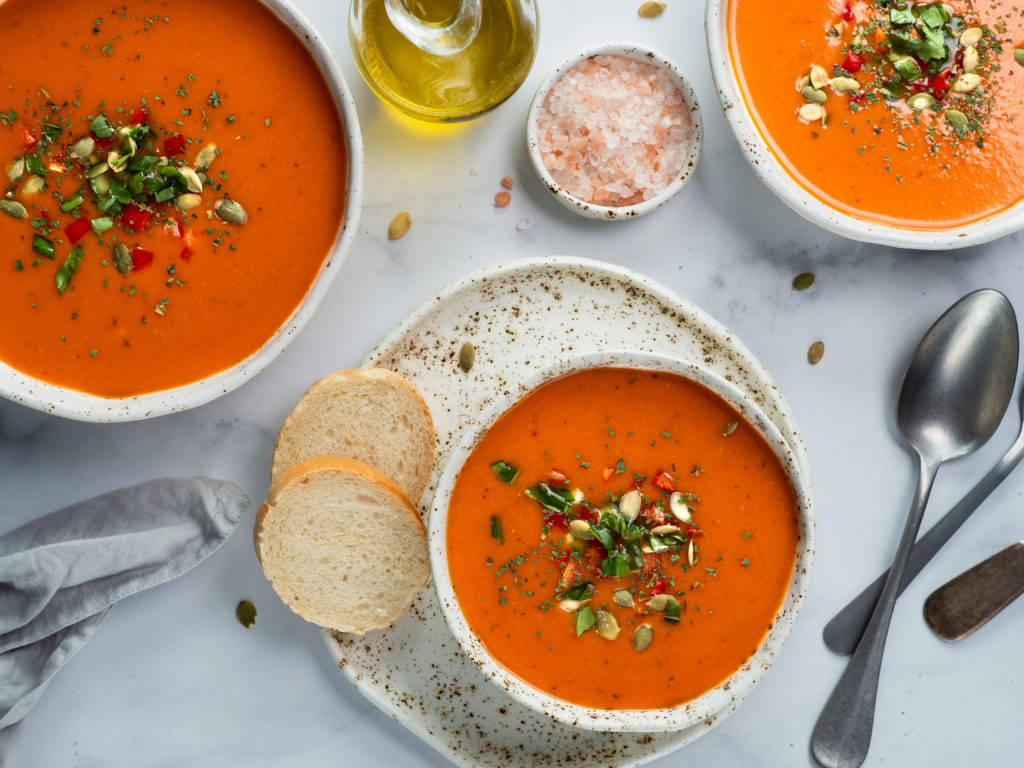The nice weather is on its way, and with it comes the urge to lighten up and brighten up our meal plans. So long tartiflette, raclette by the fireside and so on – make way for healthy cuisine and spring Clean Eating!
Spring is a sign of renewal, and the season that gives us wings. The prospect of holidays in the near future gives us a boost to get our diets back on track after the winter’s indiscretions. Take advantage of the changing of the seasons to give your body a slight RESET, even if it’s only by fasting (preferably with professional oversight) or a detox. The aim: avoid fats, meat and alcohol for several days (from 7 to 21 days, whatever you feel works for you). Then you’ll be able to head towards summer with a spring in your step by embracing Clean Eating!
Go for spring fruit and vegetables
The new arrivals on the shelves are fun and brightly coloured. Let’s take advantage of that to get back into mixed salads and put seasonal fruit and vegetables on our meal plans. As for the calendar, here are the guest stars of the shopping basket to get you inspired as you do your grocery shopping!
In April
- Vegetables: lettuce, romaine lettuce, cabbage, purslane, turnip, cress, asparagus, peas, mangetout, carrot, beans, radish, cucumber, spinach
- Fruit: apple, kiwi, lychee, grapefruit, mango, orange
In May
- Vegetables: green beans, fennel, rocket, rhubarb, chard
- Fruit: strawberry, melon, peach
In June
- Vegetables: celery stick, aubergine, capsicum, cucumber
- Fruit: plum, apricot, raspberry, cherry
The little extra something: go right ahead and grow aromatic herbs in your kitchen – it’s perfect for adding a fragrant garnish to homemade fare!
How do you fit fruit and vegetables into meal plans?
It’s not easy to change your eating habits!
As with anything, you have to embrace the baby steps technique: ”more today than yesterday, but less than tomorrow”. Here are a few different ways to get more greens into your diet:
- Get back into the habit of having a vegetable-based starter.
- Put together colour-themed meals. It works really well with children. What’s for dinner today? Red (tomatoes/capsicums/strawberries) or green (peas/asparagus/apples)?
- Give in to the temptation of an unfamiliar vegetable from the market. Celery sticks, for example, are not a commonplace vegetable, but can be eaten raw with a sauce like anchovy dip, or puréed for a change.
- Do consider soup (cold or hot), even in spring!
- Give in to the temptation of the “sample boxes” available in most organic grocery stores.
- Invent salads with anything! It’s easy. It doesn’t take much to get your chef’s hat on!
- Register with a local “hive” to buy directly from nearby producers. Each region offers a unique selection of local produce that travels an average of 60 kilometres prior to reaching your table.
Put freshness at the heart of your diet

To get all the goodness frm spring fruit and vegetables, get a little creative in the kitchen. With cookery magazines, Pinterest, Instagram (by following expert hashtags like #HealthyFood, #RecetteFacile, #RecetteHealthy) or various apps, it’s much easier to come up with tasty new recipe ideas.
For example on French recipe platform Marmiton, entering “spring” brings up spring rolls first – but then spring salad with langoustines, groundhog spring salad (palm hearts, grapefruit, apple, prawns) and spring couscous (grits with a seasonal vegetable medley…).
To be honest, there’s no excuse for being all out of ideas for your evening meal. Take this “chore” as a game so as to make it less of a bind. If you have children, so much the better! They love playing chef and arranging food nicely on the plate. Sure, afterwards the kitchen looks like a bomb has hit it… But it makes for very fond memories! An anecdote of mine about my youngest: for a long while (every Tuesday) he would do the grocery shopping and fill up his little shopping basket with various foods, then we would cook a healthy dinner together. All washed down with generous amounts of organic lemonade. We would also bring out the best crockery for the occasion.
Why eat seasonally?
Eating according to the seasons allows us to get back in tune with a “normal” pattern that is considerate of nature. Having strawberries in December makes no sense. Nutritionally speaking, fruit that is harvested when unripe and ripens during air transit is not as good as fruit that is harvested when fully ripe by a producer local to you. It’s just good sense. Supporting local producers is also a way to take action in favour of the environment.
Healthy recipe ideas
Lastly, lots of books are sources of inspiration. Among all the new releases, two are worth noting:

- Naturopathie, Le Guide Saison par Saison [Naturopathy, the Season-by-Season Guide] by Loïc Ternisien.
A very handy, comprehensive guide to taking your first steps in naturopathy. For example, in spring the author suggests making a big feature of coriander, which is known to neutralise heavy metals. In addition, he recommends eating bitter foodstuffs to support liver function. (Flammarion, €14.90).

- Orahe, ma méthode anti-âge [Orahe, my anti-ageing method] by Estelle Lefébure.
Un guide complet (santé/nutrition/sport/beauté) pour profiter pleinement du temps qui passe et de chaque saison. Pour le printemps, la Belle propose des idées de recettes inspirantes : un jus healthy au doux nom de bikini (avec du céleri et du concombre), une salade vitaminée revisitant les traditionnelles carottes râpées et un plat à base de maquereau et soja (J’ai Lu/Bien-être, 8,40 €.).










